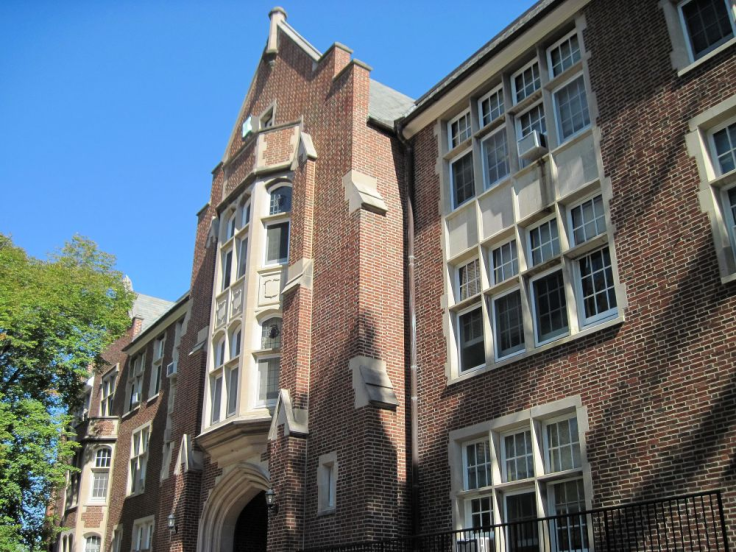Tiny colleges from every corner of the country navigate new challenges as they fight to survive financial turbulence from delays and other errors associated with the rollout of the Free Application for Federal Student Aid.
These very institutions are getting swamped into another potential enrollment crisis that might propel them into financial instability at a time when they are still recovering from the deep impacts occasioned by the COVID-19 outbreak. These FAFSA disruptions undermine the ability of colleges to both predict and secure enrollment numbers with lower completion rates among prospective students. This unplanned obstacle has many small colleges making deep budget cuts and revisiting their strategic plans.

Budget Cuts and Enrollment Decline
Last December, Lindenwood University in St. Charles, Missouri, announced significant budget cuts, including the elimination of 10 of its 50 sports programs and nine nonathletic staff positions. The "rebalancing" was designed to get the institution through an especially difficult fiscal year that was unusually dependent on stable tuition income. However, the university was hit with the largest enrollment disruption seen since the COVID-19 pandemic, largely due to problems with the Free Application for Federal Student Aid.
The rollout of the new FAFSA was months late and riddled with glitches, which hurt student completion rates and colleges' yield predictions. In Missouri, as of mid-June, only 41 percent of high school seniors completed the FAFSA- a dramatic drop from the year before. Lindenwood's projected fall enrollment has been hit directly, down 12 percent year over year from last year. This forced the university to declare a further 10 percent cut to the operating budget, leading to further layoffs.
"We would not have cut to the degree that we did had it not been for what we're seeing with FAFSA," said Lindenwood President John Porter. The university's situation reflects a deeper financial concern: the struggle of small private independent colleges, where financial survivability rests increasingly on tuition revenue and a high dependency on enrollment flows and consequent shocks from administrative problems, including what happened at hand with FAFSA.
Program Cuts and Institutional Restructuring
In those small colleges struggling financially, the FAFSA crisis accelerated program cuts and restructuring efforts, serving as a true "force multiplier." Take the case of Hampshire College in Amherst, Massachusetts: FAFSA delays hit hard. The institution was destined for recuperation from its financial instability and growth but had to project over $1 million in cuts to staff benefits and salary because of lower-than-anticipated enrollment.
Bradley University in Peoria, Illinois, and the University of Lynchburg are no exception, with huge plummets in enrollment and equally huge financial ammo box steps being taken to mitigate financial impacts. Bradley University saw its freshman class dwindle 30 percent in size last year but now appears to have leveled out. Still, the school is gun-shy about making any predictions. On the other hand, the University of Lynchburg announced a restructuring of its academic offerings, reducing the number of undergraduate and graduate programs and cutting 40 staff.
According to Justin Monk, the director of student and institutional aid policy at the National Association of Independent Colleges and Universities, the crisis around the Free Application for Federal Student Aid has stripped much of the financial cushion that small colleges could use to manage other problems. "Enrollment declines don't wash their hands clean in a year; those ripples follow you for four years," said Monk about the long-term implications for these institutions.
Strategic Adjustments and Outlook of the Future
In response to these challenges, many small colleges are not just reacting to immediate financial pressures but also preparing for worst-case scenarios. Lindenwood University, amidst the cuts, actually increased its recruitment and marketing in efforts to recover lost students; new billboard ads running on local television and targeted recruitment assured that deposits were 23 percent higher than a year ago.
"The FAFSA sort of crystallized a lot of our thinking about how serious we need to be, " Porter said. That is a crisis, but one that has been used as a sort of catalyst for more general strategic readjustments. The proactive approach ensures that it runs, in the worst-case scenario, within the financial margins of error. He insists on not banking on precarious enrollment projections but taking strong actions to guarantee financial security.
The troubles Lindenwood University and others like it have gone through point to a significant challenge higher education faces today: growing tuition dependence and the fragility of small colleges in the face of administrative and policy-related shocks. Strategic thinking and adaptability will ensure that small colleges survive and grow while this sector trundles forward through these turbulent times.
These FAFSA delays hit small colleges the hardest, with severe budget cuts, elimination of programs, and strategic restructuring. These institutions are now planning for the worst while seeking innovative ways to stabilize and grow their enrollment figures. The future of these small colleges will depend upon how the schools can adapt their financial challenges to their strategic planning in order to survive in the long run.
© 2025 University Herald, All rights reserved. Do not reproduce without permission.








